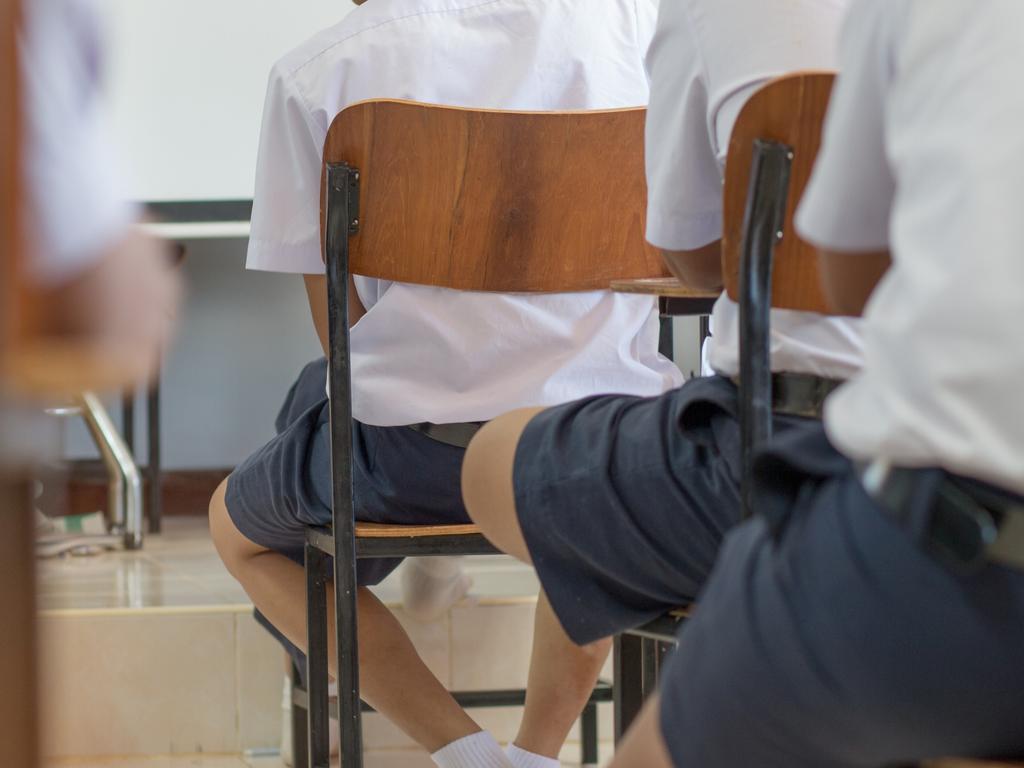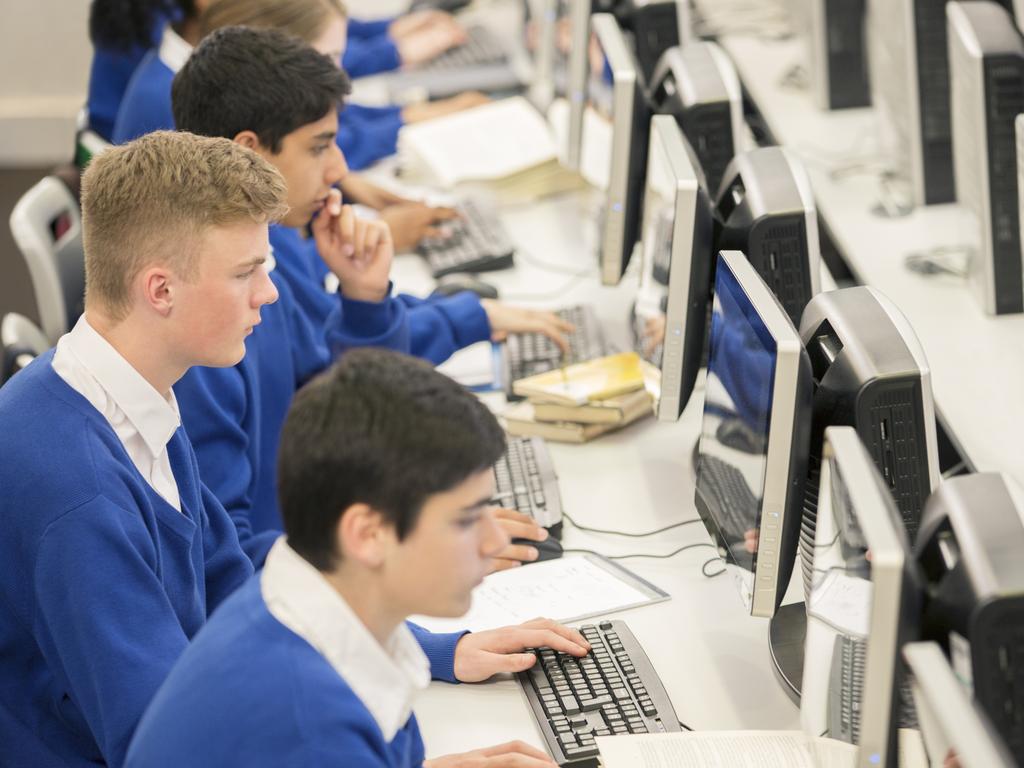‘Rape fantasies’: Teacher reveals male student’s disturbing remark to her
A teacher was told by a male student she was in his “rape fantasies”, according to a new report that’s exposed a disturbing problem in our schools.
A teacher has reported being told by a male student she was the subject of his “rape fantasies”, as part of a new survey exposing the widespread and deeply entrenched sexual harassment Australian educators are being subject to.
The full findings of the national study – conducted by Collective Shout, a grassroot campaigns movement against the objectification of women and sexualisation of girls, and parenting author and educator, Maggie Dent – will be released on Monday.
But a preview of the survey of more than 1000 teachers has painted a disturbing picture. Participating teachers – almost all female – reported being on the receiving end of routine sexual harassment by male students, including propositions for sex, rape threats, sexist slurs and mimicking of sex acts seen in pornography.
According to the Sexual Harassment of Teachers (SHoT) survey, 46.9 per cent of all respondents had experienced such harassment within a school environment. Almost all (80.6 per cent) said it had been instigated by a student, predominantly male students in years 9 and 10.
“I had a student tell his girlfriend about his rape fantasies involving me,” one teacher revealed as part of the survey.
“He also threatened to rape his girlfriend if she told anyone.”

Others reported that, when trying to teach a class, they were sexually moaned, groaned, and grunted at, asked for nude photos, and intimidated.
“Moaning is a big problem. Even ‘good’ kids are doing it to win favour with others,” one participant noted.
“The moaning I’ve heard was from boys.”
Some of the harmful sexual behaviours, teachers said, were exhibited by children from as young as kindergarten to Year 3.
“(As a teacher I have) never felt so drained, mentally and emotionally, (as I have) in the past two years dealing with the increase of this behaviour with no school supports in place,” one teacher said.
Another respondent expressed a similar sentiment, telling the survey: “The safety of very large portions of the school community is at risk, not just (in terms of) physical safety but mental and emotional wellbeing.”
Some said they had been driven to long-term leave to deal with their mental health decline, changing schools (eight per cent), or leaving the profession entirely (almost two per cent).
Reports of peer-to-peer sexual harassment, the survey found, are also on the rise.
More than half of respondents (66.6 per cent) reported witnessing the sexual harassment of a student by another student, while 57.4 per cent of teachers had received at least one disclosure from a student about being sexual harassed.
Concerningly, 39.1 per cent had received up to five disclosures from a student.
Many of these disclosures concerned victims of Image Based Sexual Abuse (IBSA), with girls in years 5 and 6 being “continually asked” by their male peers into sending sexual images. These photos are “then being passed around to other boys”.
Feminist researcher at Monash University and former teacher, Dr Stephanie Wescott, is currently looking at how toxic male influencers – like leading voice of the manosphere, Andrew Tate – are impacting behaviour in Aussie schools.
What’s often overlooked in instances of male students’ inappropriate behaviour, Dr Wescott told news.com.au in August, is how it in turn diminishes girls’ “feelings of safety, but also how they come to understand the relations between themselves and (their) boy peers”.
“Gendered violence in schools has been an issue for decades,” she said.
“And yet, we lack meaningful policy on responses and reporting, and women are constantly disappointed, diminished and gaslit when they report concerns.
“(This) seems to have become a cultural norm in Australia, rather than something we are appalled by or actively working to eliminate.”
In the SHoT survey, a number of teachers reported that students often framed sexual harassment as “jokes” or “banter”, and failed to recognise why their behaviour was problematic.
“Too many times I’ve seen male students get away with a warning for really inappropriate sexual behaviour towards female students because ‘they’re too young, (it’s) just boys being boys’,” one teacher said.

Girls witnessing their teachers being “constantly disrespected and undermined in their workplace has implications too”, Dr Wescott said.
Such behaviour is contributing to a severe shortage of educators, too: the federal Department of Education predicts by 20245, the number of new graduates will be 4100 less than the number of secondary teachers needed nationwide.
Half of the participants in a survey of Queensland state school teachers this year reported managing classroom behaviour was the biggest issue taking time away from educating students. While in South Australia, the number of those who have deserted public school classrooms has more than doubled in the past five years.
“We have a workforce crisis in teaching, in a profession of mostly women, and yet their safety is continuously deprioritised,” Dr Wescott said.
“Schools remain largely patriarchal in their structure, but also in leadership, which informs how they respond when these things occur. We hear constantly from women who are let down by their schools when they report incidents of sexism and misogyny.”
Eliminating gender-based violence in schools, Dr Wescott said, “needs to be a national priority”.
“This involves viewing schools as key sites of primary prevention, funding evidence-based prevention responses, and national and state policies driving whole-of-school cultural change,” she said, noting the need for proper guidelines and gender-based violence reporting mechanisms.
“This requires leadership from federal and state governments, and we’re just not there at all.”






